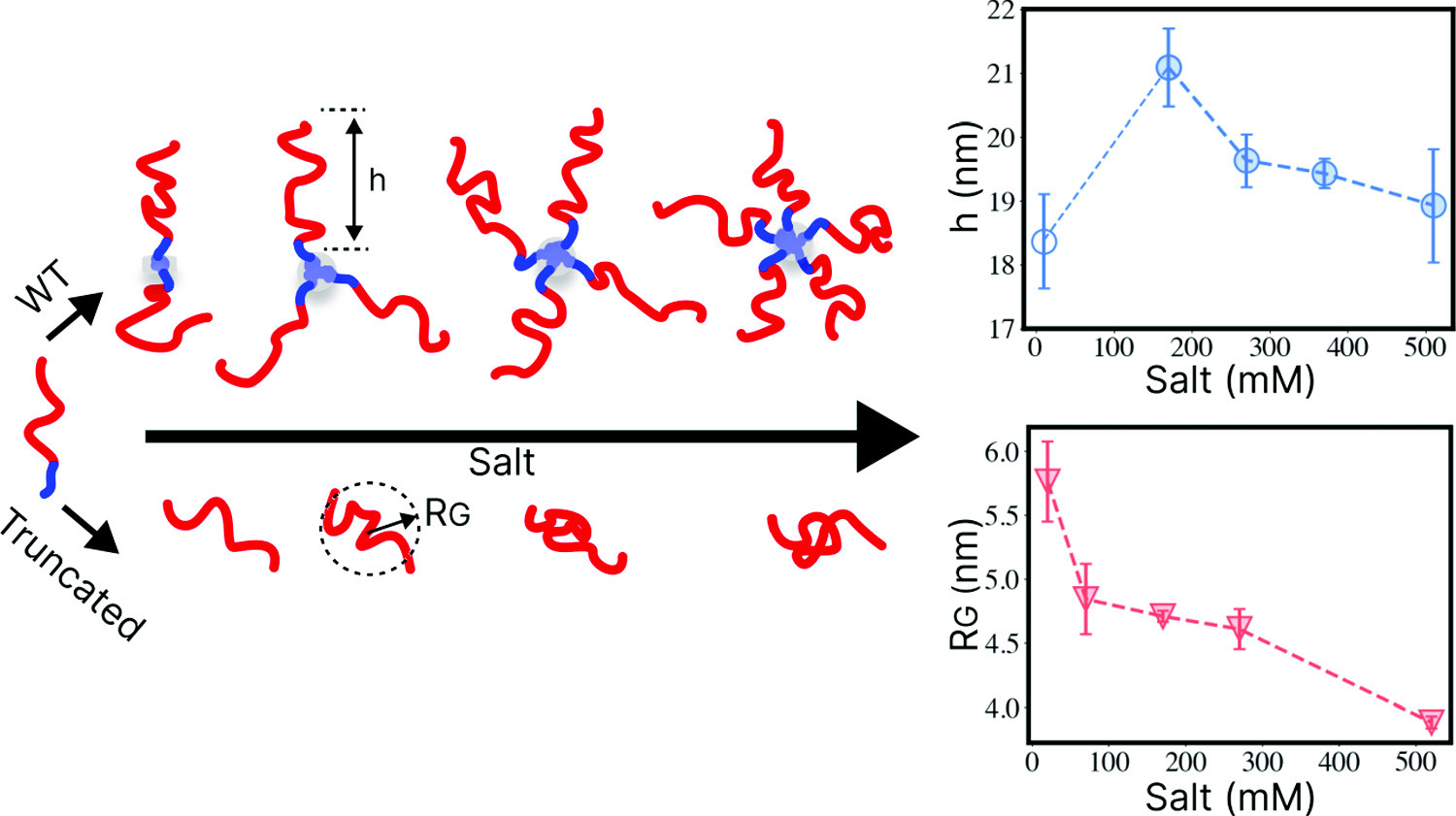https://doi.org/10.1140/epje/s10189-024-00409-8
Regular Article - Soft Matter
From isolated polyelectrolytes to star-like assemblies: the role of sequence heterogeneity on the statistical structure of the intrinsically disordered neurofilament-low tail domain
1
School of Physics and Astronomy, The Center for Nanoscience and Nanotechnology, Tel Aviv University, Tel Aviv, Israel
2
The Center of Physics and Chemistry of Living Systems, Tel Aviv University, Tel Aviv, Israel
3
Materials Department, Biomolecular Sciences and Engineering Program, University of California, Santa Barbara, USA
4
Physics Department, University of California, Santa Barbara, USA
Received:
26
November
2023
Accepted:
2
February
2024
Published online:
15
February
2024
Intrinsically disordered proteins (IDPs) are a subset of proteins that lack stable secondary structure. Given their polymeric nature, previous mean-field approximations have been used to describe the statistical structure of IDPs. However, the amino-acid sequence heterogeneity and complex intermolecular interaction network have significantly impeded the ability to get proper approximations. One such case is the intrinsically disordered tail domain of neurofilament low (NFLt), which comprises a 50 residue-long uncharged domain followed by a 96 residue-long negatively charged domain. Here, we measure two NFLt variants to identify the impact of the NFLt two main subdomains on its complex interactions and statistical structure. Using synchrotron small-angle x-ray scattering, we find that the uncharged domain of the NFLt induces attractive interactions that cause it to self-assemble into star-like polymer brushes. On the other hand, when the uncharged domain is truncated, the remaining charged N-terminal domains remain isolated in solution with typical polyelectrolyte characteristics. We further discuss how competing long- and short-ranged interactions within the polymer brushes dominate their ensemble structure and, in turn, their implications on previously observed phenomena in NFL native and diseased states.
Supplementary Information The online version contains supplementary material available at https://doi.org/10.1140/epje/s10189-024-00409-8.
© The Author(s) 2024
 Open Access This article is licensed under a Creative Commons Attribution 4.0 International License, which permits use, sharing, adaptation, distribution and reproduction in any medium or format, as long as you give appropriate credit to the original author(s) and the source, provide a link to the Creative Commons licence, and indicate if changes were made. The images or other third party material in this article are included in the article’s Creative Commons licence, unless indicated otherwise in a credit line to the material. If material is not included in the article’s Creative Commons licence and your intended use is not permitted by statutory regulation or exceeds the permitted use, you will need to obtain permission directly from the copyright holder. To view a copy of this licence, visit http://creativecommons.org/licenses/by/4.0/.
Open Access This article is licensed under a Creative Commons Attribution 4.0 International License, which permits use, sharing, adaptation, distribution and reproduction in any medium or format, as long as you give appropriate credit to the original author(s) and the source, provide a link to the Creative Commons licence, and indicate if changes were made. The images or other third party material in this article are included in the article’s Creative Commons licence, unless indicated otherwise in a credit line to the material. If material is not included in the article’s Creative Commons licence and your intended use is not permitted by statutory regulation or exceeds the permitted use, you will need to obtain permission directly from the copyright holder. To view a copy of this licence, visit http://creativecommons.org/licenses/by/4.0/.





